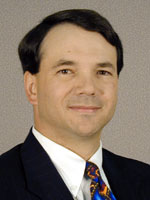Why Work in a Think Tank? Part 2
 If you are exploring careers in public policy, you should consider the policy-shaping role of think tanks. Think tank professionals can exert influence on public policy that is both enormous and indirect. To understand why, you must know how think tanks work. This is the second part in a series. Read the first here.
If you are exploring careers in public policy, you should consider the policy-shaping role of think tanks. Think tank professionals can exert influence on public policy that is both enormous and indirect. To understand why, you must know how think tanks work. This is the second part in a series. Read the first here.
The author Victor Hugo famously wrote that ideas are more powerful than all the armies of the world. Ideas create the stage on which all of us perform. Nearly everything that surrounds us, whether it’s an object, an institution, or a way of doing things, is the result of someone’s idea.
Perhaps the most influential economist of the 20th century, John Maynard Keynes, wrote this in 1936:
…the ideas of economists and political philosophers, both when they are right and when they are wrong, are more powerful than is commonly understood. Indeed the world is ruled by little else. Practical men, who believe themselves to be quite exempt from any intellectual influences, are usually the slaves of some defunct economist. … Soon or late, it is ideas, not vested interests, which are dangerous for good or evil.
So are we simply at the mercy of nameless, faceless intellectual forces? Or is there a way to channel ideas to accomplish the mission of better public policy?
Economist F.A. Hayek understood how ideas shaped society. Hayek advised against involvement in politics alone for those who wanted more liberty. He believed it was the intellectuals who determined how the politicians would ultimately act.
In “The Intellectuals and Socialism,” Hayek called these intellectuals “secondhand dealers in ideas.” He didn’t mean it pejoratively. He merely recognized that very, very few people generate ideas that are truly unique. Almost all of the other intellectuals contribute by developing and communicating the ideas and expanding the influence of those ideas along the way.
In society, ideas move from the idea-initiators—very rare people—to “secondhand dealers” like those in the think tanks and elsewhere, to the culture at large, and finally to the political class.
But new ideas are seldom met with open arms at any stage, especially by those whose livelihoods depend on the old ideas. The ideas that are eventually adopted typically meet with responses that generally progress like this:
• Indifference
• Ridicule
• Rejection
• Attack
• Criticism
• Plausible, or partial, consideration
• Tolerance
• Desirability
• Necessity
• Inevitability
• Acceptance
• “I knew it was a good idea all along.”
Commentator Joshua Treviño has boiled down the political progression of ideas to these six steps:
• Unthinkable
• Radical
• Acceptable
• Sensible
• Popular
• Policy
This may be how ideas flow through the public policy process, but what force drives the ideas through their phases?
We’ll answer that next week.
Joseph G. Lehman is president of the Mackinac Center for Public Policy. This post is part of a series from the Institute for Humane Studies Public Policy Career Guide.
